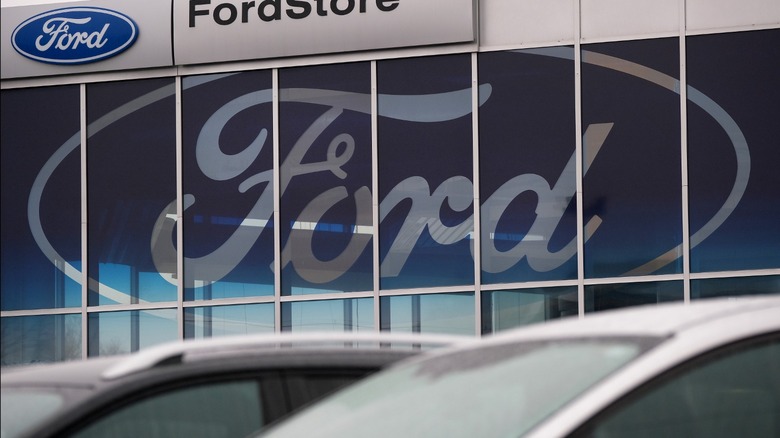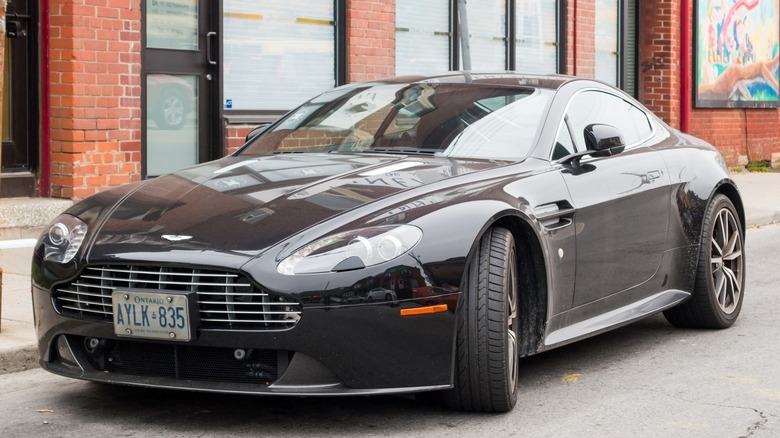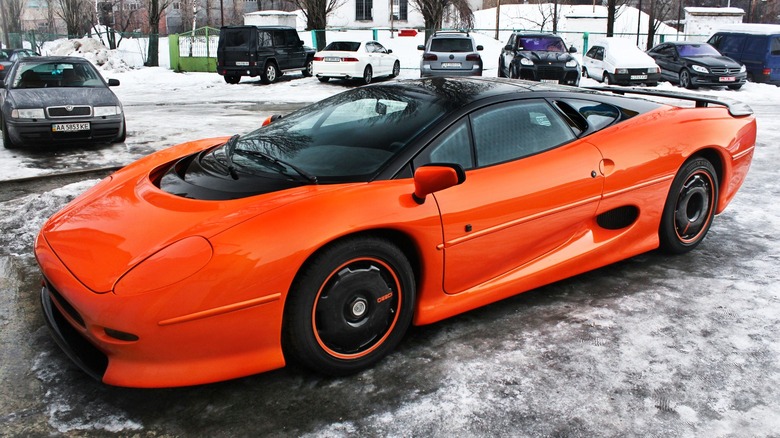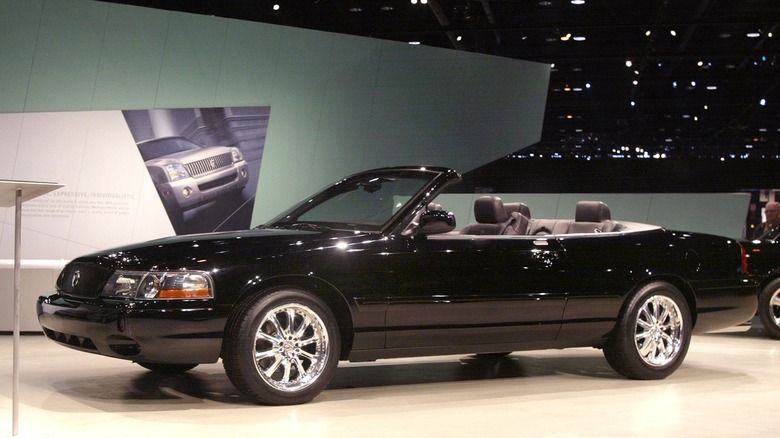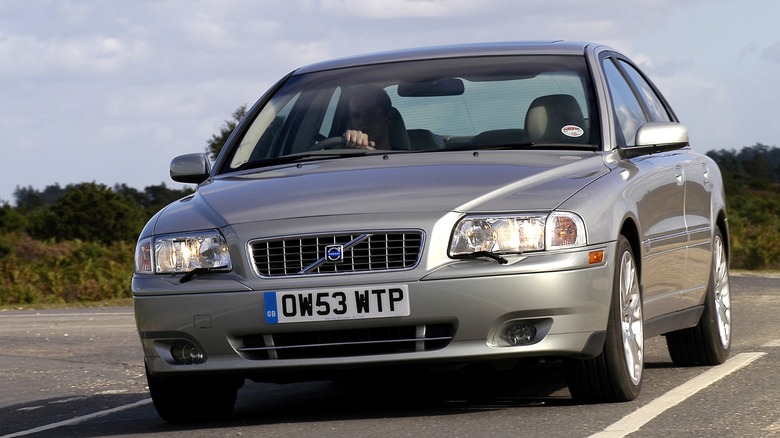5 Car Brands You Probably Didn't Realize Ford Owned
Ford is one of the world's oldest car brands, founded in 1903 and continuously operating to the present day. The company also successfully introduced assembly line innovations that allowed it to make an affordable car with the Model T.
Ford didn't stop at making cars: It also dipped into other industries, like aviation, where the company made the Ford Trimotor, an airplane still worth a lot of money today, and tanks, including some variants of the battlefield-dominating M4 Sherman and M10 Tank Destroyers – one of the best tank destroyers of World War 2 – for the Allies.
But Ford is best known for its road vehicles. Many other competitors made great cars, SUVs, and trucks, and when Ford saw the opportunity, it snapped them up and added them to its portfolio.
While Ford eventually sold most of them later, it profoundly impacted these companies through shared technologies and design or by providing much-needed cash and capital that kept them afloat. More than that, some of these companies also influenced Ford through technology transfers and even made some models that were just rebadged into Ford.
Aston Martin
Many of us know Aston Martin as the boutique car brand that made expensive luxury sports cars like the 2023 Aston Martin DB12 and the $2.3 million Aston Martin Vulcan. The company started as Bamford and Martin in 1913, before rebranding as Aston Martin Motors between 1924 and 1925.
Aston Martin was intermittently troubled with financial difficulties throughout its history, and in 1987, Ford bought a 75% stake in the company to help keep it afloat. In 1993, Ford purchased the remaining 25%, making it the sole owner of Aston Martin. Under Ford's care, Aston Martin received a new factory to produce the DB7 in Bloxham, England.
Ian Callum, a Ford employee, also designed some legendary Aston Martin models like the V8 Vantage and the V12 Vanquish. He also created similar-looking cars for other brands in the Ford lineup, like the Jaguar XK, one of the best Jaguars of all time.
Ford's ownership of Aston Martin ended in 2007 when it sold the brand to David Richards, chairman of motorsport and engineering group, Prodrive. While some argue that Ford did not have the best intentions for the car brand when it bought it in 1987, it's possible that Aston Martin would not exist today had Ford not saved the company from bankruptcy in the 1980s.
Jaguar
Jaguar is another British brand that interested Ford. In 1989, the American giant bought the ailing car maker for $2.38 billion to help bolster its international luxury car presence. While Aston Martin helped Ford enter the premium car segment and gave the company the prestige it craved, it didn't produce enough cars to satisfy Ford's goal of entering the luxury car market. So, analysts at the time expected Ford to produce a high-volume, high-priced vehicle under the Jaguar marque.
Under Ford's ownership, Jaguar produced iconic models like the 2003 XJ X350, one of the best generations of the Jaguar XJ. Furthermore, the Jaguar XJ220 supercar, which, unfortunately, is not available locally in the US, also came out of this partnership.
Although Ford helped Jaguar to survive through the turbulent years of its tenure, it wasn't exactly a financial success for the former. The economic crisis of the late 2000s had heavily affected Jaguar, causing it to lose $15 billion between 2007 and 2008, and Ford sold Jaguar to Tata Motors for $2.3 billion in 2008.
Land Rover
The first Land Rover model was part of the Rover brand, one of the oldest car brands in the world, before the latter spun it off as its own brand in 1978. Eventually, BMW bought the brand in 1994, alongside its parent company, Rover. However, Rover and Land Rover did not perform well for BMW, resulting in massive losses for the company, and in 2000, BMW sold the Land Rover brand to Ford.
With Ford at the helm, Land Rover used the former's massive financial resources to improve its existing model lineup, including adding front and rear independent suspension and height-adjustable air springs. Furthermore, some Land Rover models used six- and eight-cylinder engines from Ford until 2020, by which time Land Rover was self-sufficient in engine production.
However, Ford was heavily affected by the 2008 recession, causing it to lose billions. So, to help right the ship, the company sold Land Rover — alongside Jaguar — to Tata Motors in 2008. In 2013, Tata merged these two companies to create Jaguar Land Rover, turning the brands once under Ford's umbrella into one successful company.
Mercury
Ford bought all the car brands we've listed so far, but Mercury is different from them as it is a home-grown Ford brand. The Mercury marque was the brainchild of Edsel Ford and sales manager Jack Davis when, in 1938, they decided to create a brand separate from Ford and Lincoln to sell a technologically advanced model.
The Mercury brand was the company's mid-range offering, sitting between Ford and Lincoln. Because of this, it offered several iconic Ford models, like the Mustang (transformed into the Cougar), which were rebadged as Mercury models and given upgraded trim. Many Mercury muscle cars are often underappreciated despite often having the same or better performance as their Ford counterparts.
Although Mercury continued making great cars — like the Ford Crown Victoria-based Mercury Marauder – until the 2000s, declining interest and brand identity were the writing on the wall. When the 2007 subprime mortgage crisis sent the American economy into a downward spiral, Mercury was the first in-house brand on Ford's chopping block. In January 2011, the last Mercury Grand Marquis left the production line, and Ford shuttered the Mercury brand for good.
Volvo
Volvo Cars was established in 1927. Although primarily a carmaker, it has since expanded into other industries, including trucks and construction equipment. In 1999, Volvo Group decided to sell its car division to focus on trucking. Ford Motor Company bought the group for SEK 50 billion ($6.4 billion), and brought it into its Premier Automotive Group (PAG) alongside other premium brands like Aston Martin, Jaguar, Land Rover, and Lincoln.
Under Ford's ownership, Volvo introduced the S80 and V70, based on the Ford EUCD platform, for the European market. Volvo even made the 300 horsepower V70 R station wagon, a modern classic you can get for cheap.
Ford also launched models with Volvo's influence in 2004 – specifically the Ford Five Hundred and the Ford Freestyle. Although they've since been discontinued, they featured several Volvo safety technologies, like all-wheel drive, a collapsible steering column, and curtain airbags. You can still find these technologies in modern Ford vehicles, like the Ford Taurus, which replaced the short-lived Ford Five Hundred.
But, just like the other PAG brands on this list, Ford sold Volvo to help keep it afloat during the turbulent times of the late 2000s. Zhejiang Geely Holding Group, the parent company of Chinese carmaker Geely Auto, bought the brand in 2010 for $1.8 billion.
